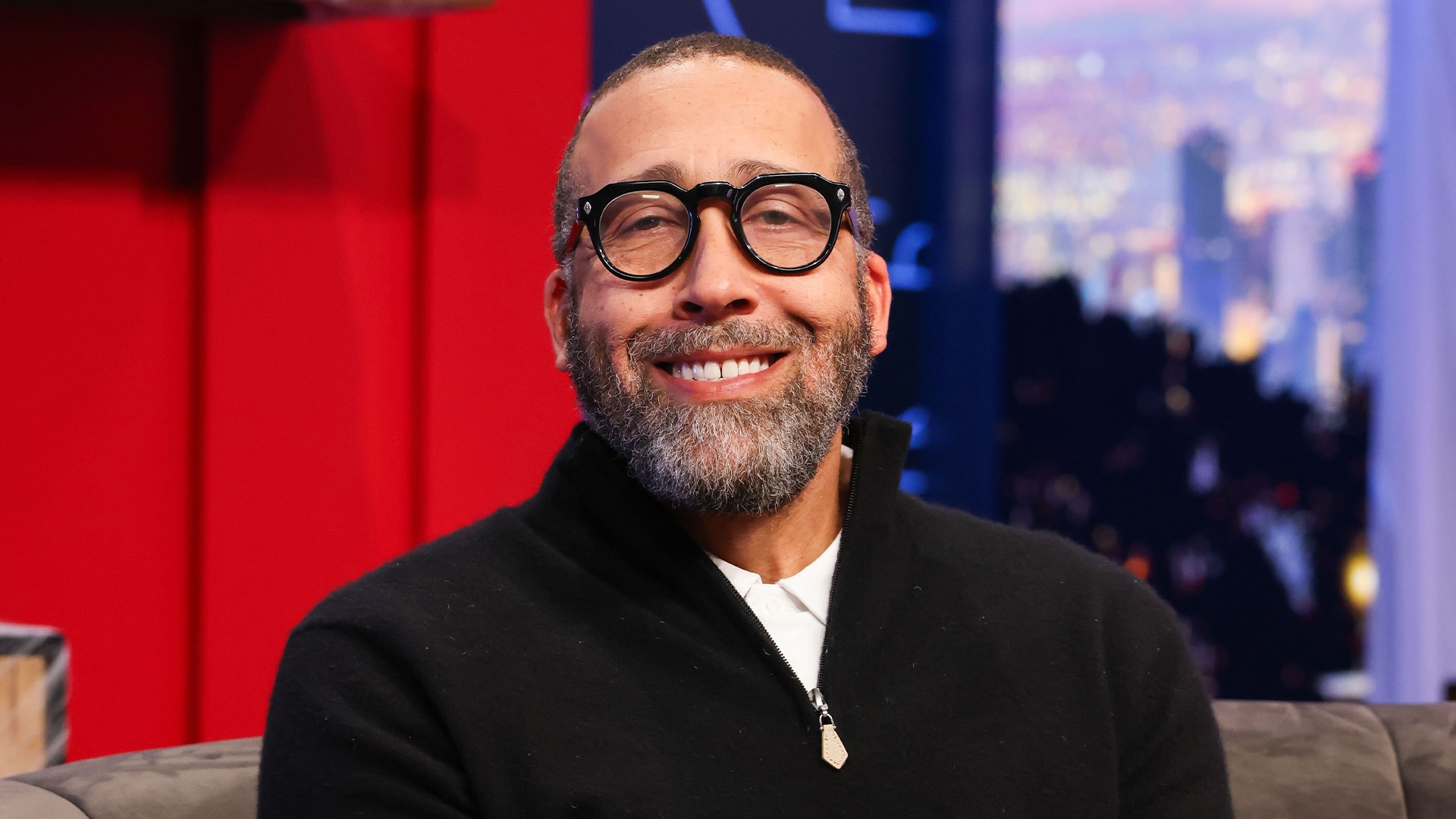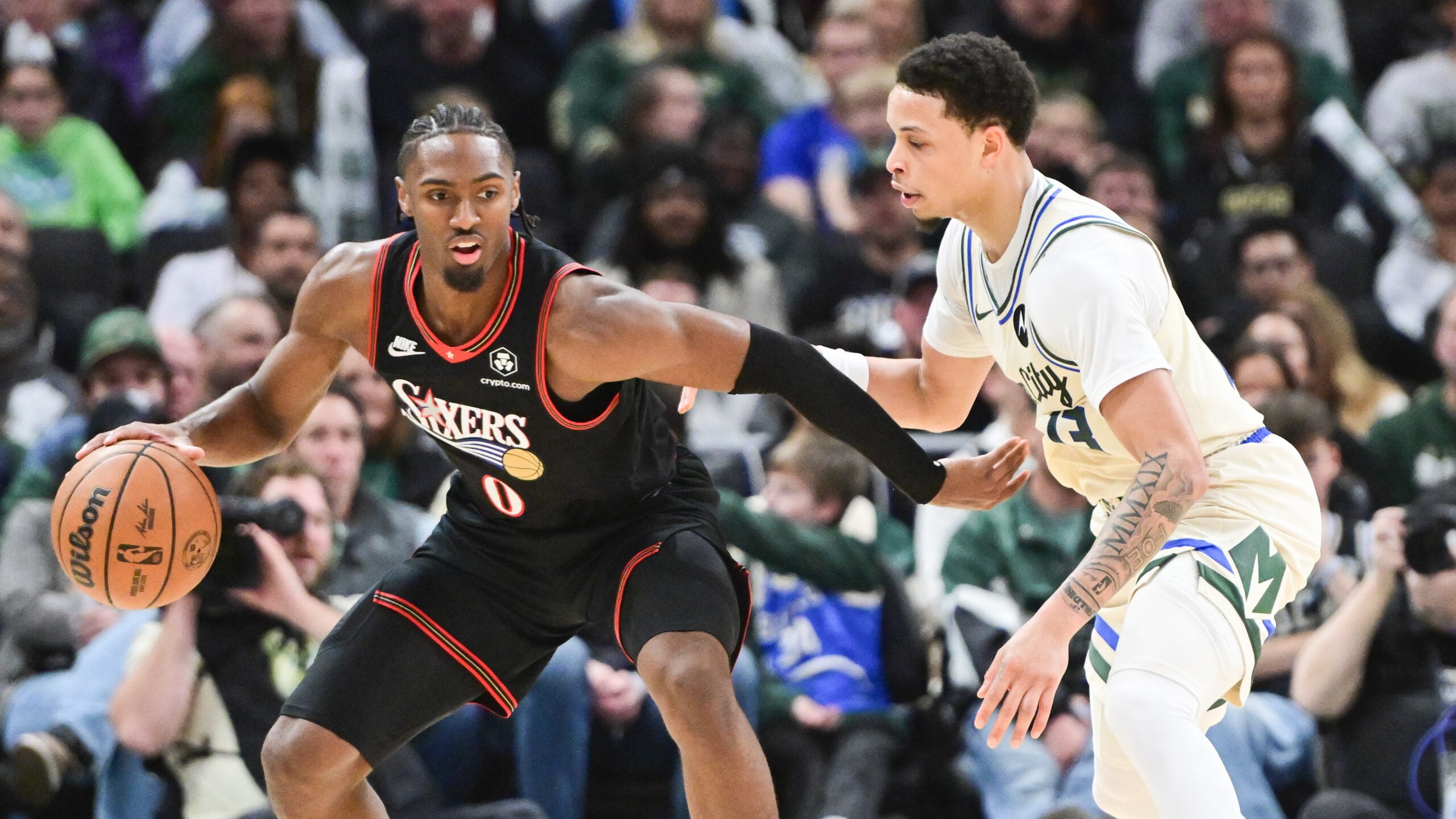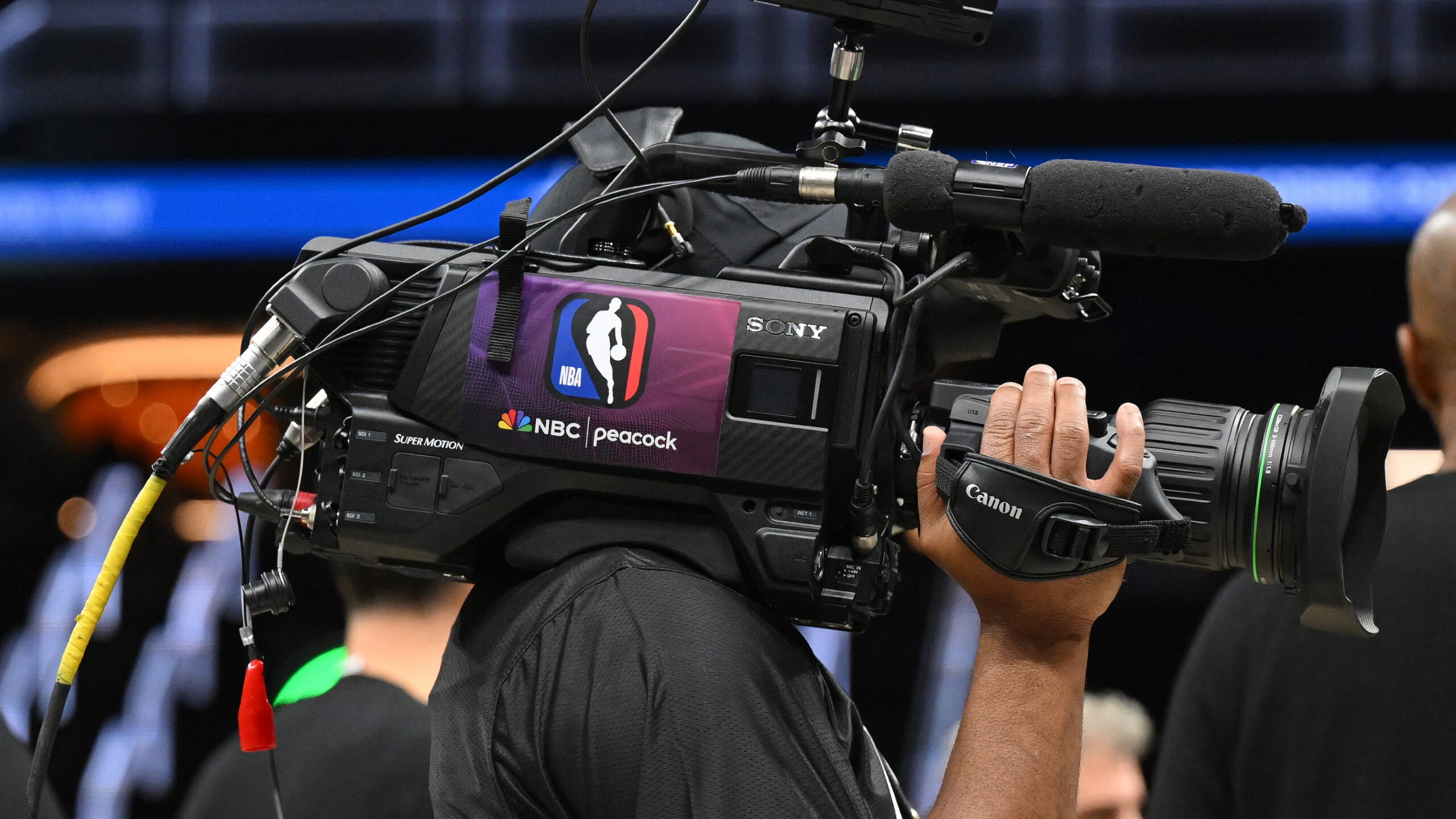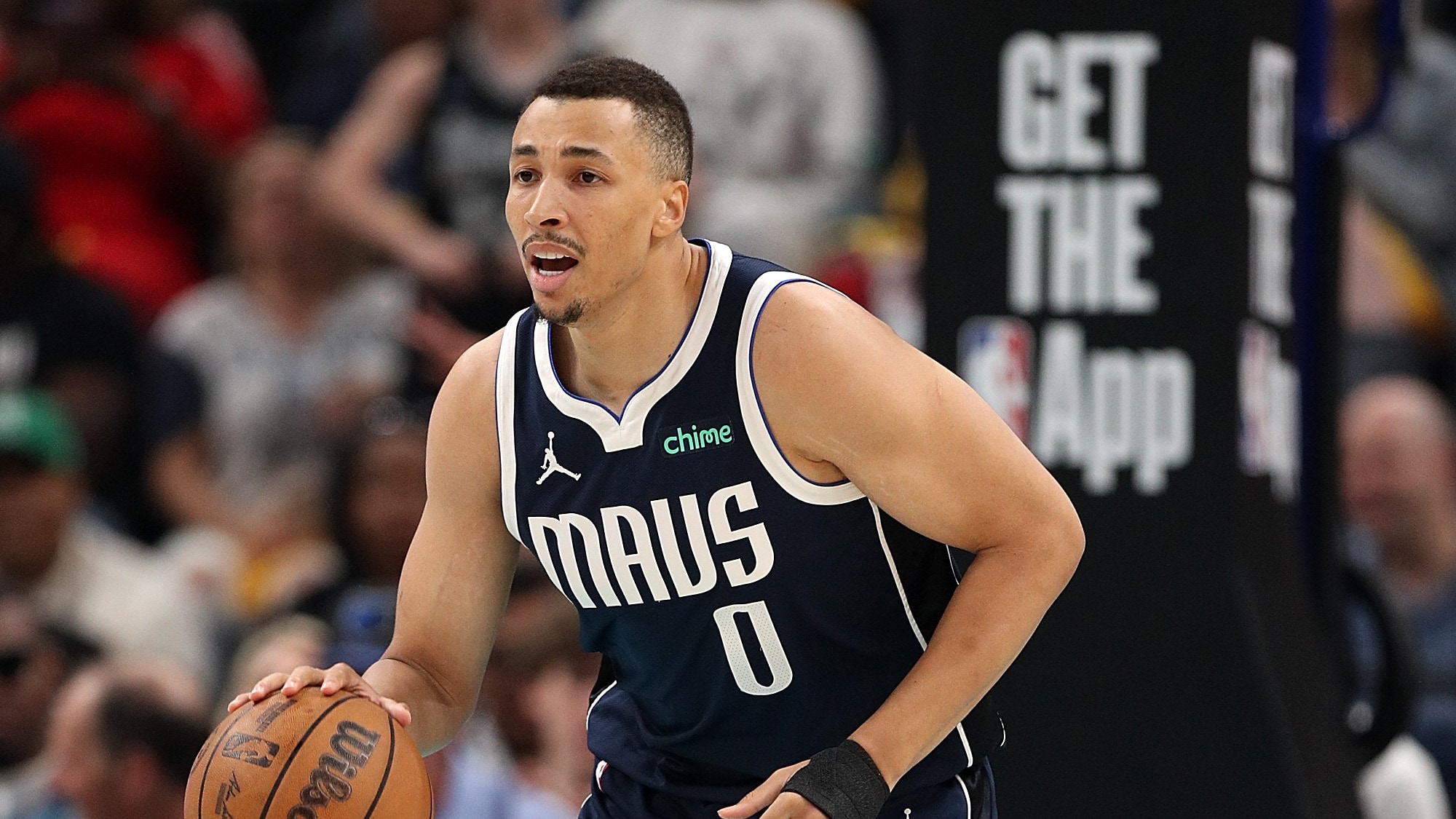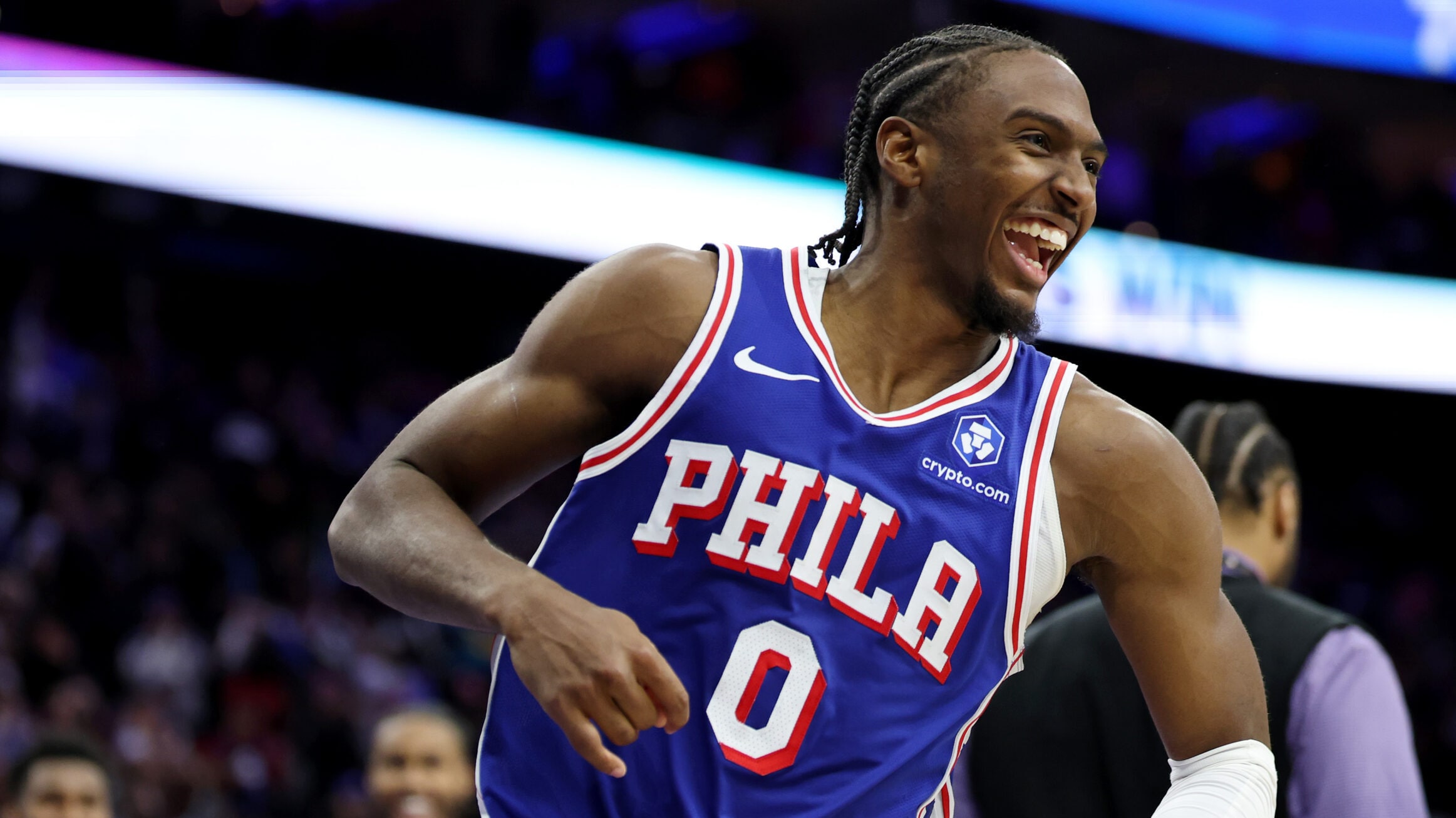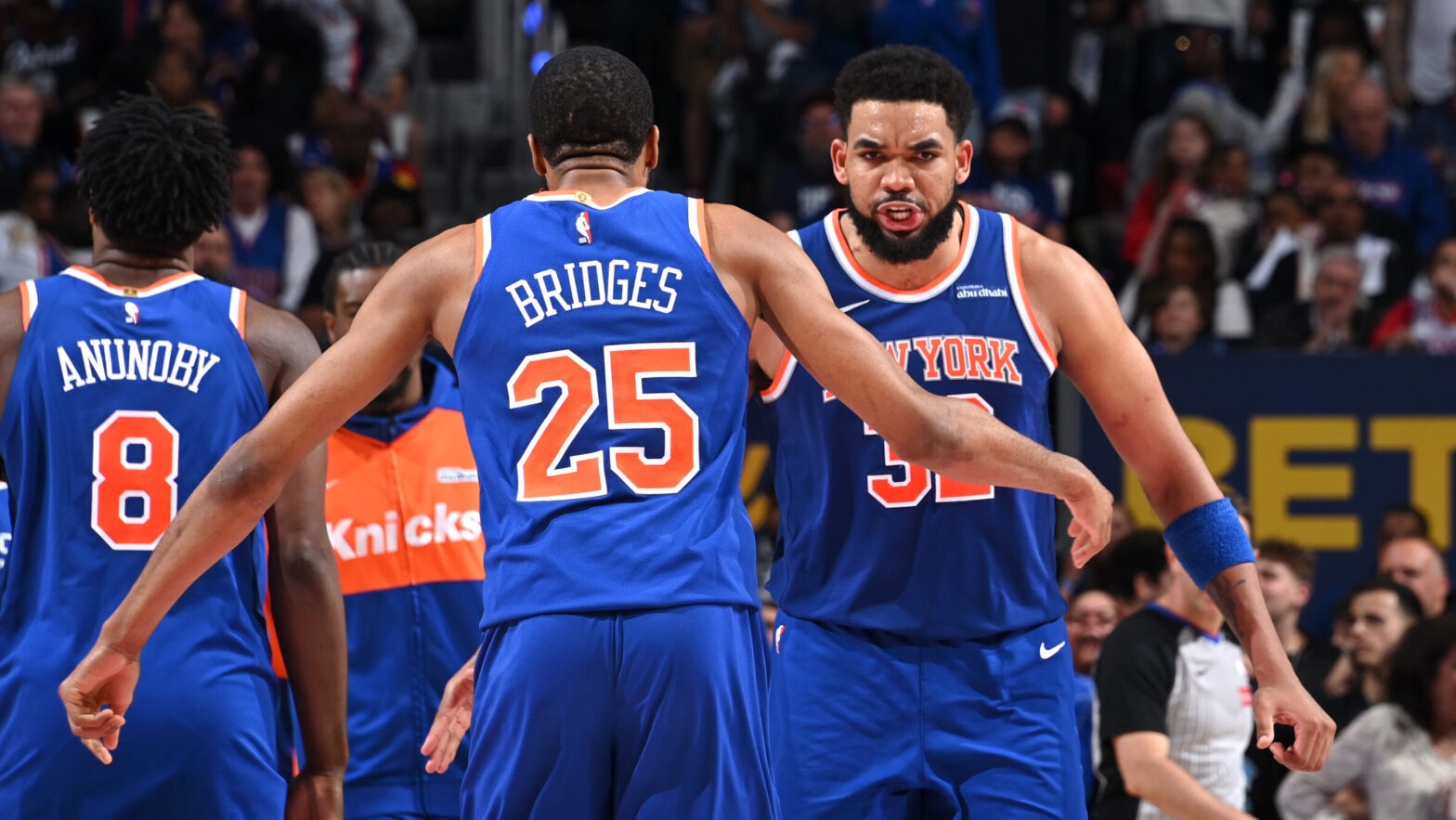
Mikal Bridges and Karl-Anthony Towns were part of a busy offseason in New York.
There have been a lot of big trades over the last year, and some of them are still making an impact in the NBA playoffs. The Luka Dončić saga garnered the biggest headlines, but with his season over, other key players are still alive with the teams that traded for them in the last year. Here are some notes and numbers on those critical contributors.
1. Mikal Bridges and Karl-Anthony Towns, New York Knicks
The Knicks went all-in last summer, trading a bunch of picks for Bridges and acquiring Towns just before training camp. Both guys contributed to what was a top-five offense, but the Knicks seemingly had a ceiling, going 0-10 against the three best teams in the league.
Bridges had lost eight straight meetings with the Celtics before Monday, when the Knicks stunned the champs by coming back from 20 points down in Game 1 of the conference semifinals. Towns wasn’t particularly effective on either end of the floor, but did have a big tip-in in overtime, when Bridges made big plays on both offense and defense.
Three numbers to know
- Towns grabbed a career-high 18.7% of available rebounds in the regular season, his third season averaging at least 24 points and 12 rebounds per game. He and Nikola Jokić (who also did it for a third season this year) are the only active players with three seasons or more averaging at least 24 and 12.
- Bridges had a regular-season usage rate of 19.2%, down from 23.8% last season with Brooklyn. That was the fifth biggest drop among 201 players who played at least 1,000 minutes in each of the last two seasons. His playoff usage rate is even lower (17.2%).
- Towns has averaged just 30.7 points + rebounds + assists per game in the playoffs, down from 40.3 in the regular season. That’s the ninth biggest drop among 127 players who’ve played at least five playoff games. But he’s shot 6-for-7 on clutch shots, with six of the Knicks’ seven games having been within five points in the last five minutes.
If the Knicks are going to advance to the conference finals for the first time in 25 years, they’re probably going to need more from Towns, who’s being defended by smaller guys. Game 2 is Wednesday (7 p.m. ET, TNT).
2. Jimmy Butler, Golden State Warriors
The Butler addition revived the Warriors, who went 23-7 in the regular season with him in uniform. Some late slippage put them in the Play-In, but they outlasted the Rockets in a tough, 2-7 series in the first round and then opened the conference semifinals with a win in Minnesota on Tuesday.
Three numbers to know
- Butler had a free-throw rate of 65.7 attempts per 100 shots from the field in the regular season. That was the highest rate by a huge margin among 306 players with at least 250 field goal attempts, and it was higher in his 30 games with the Warriors (69.2 per 100) than it was in his 25 games with the Heat (61.2 per 100). The Warriors outscored their opponents by 4.9 points per game at the line over those 30 games, having been outscored by 2.3 per game at the line over their other 52.
- The Warriors’ turnover differential was also much better in the games Butler played (3.7 fewer per game than their opponents) than it was otherwise (0.5 fewer per game). This was the 11th season in which he had more steals (77) than personal fouls (52), tying Jason Kidd for the most such seasons in the 52 years that steals have been counted.
- Butler has a usage rate of 21.4% in the playoffs, his lowest rate in the last six postseasons (since his one full season in Minnesota). With the Warriors losing Stephen Curry to a hamstring strain in the first half, Butler (20 points, 11 rebounds and eight assists) did have a higher usage rate on Tuesday (24.5%) than in his previous five games.
The Warriors, now 3-2 on the road in the playoffs, could need more from Butler if Curry is going to miss more time. They’ll play every other day through Game 5, with Game 2 on Thursday (8:30 p.m. ET, TNT).
3. Alex Caruso, Oklahoma City Thunder
Caruso seemed like the perfect fit in Oklahoma City when he was acquired for Josh Giddey last June. Nothing since then contradicts that notion, though his minutes have been limited on what might be the deepest team in the league.
He scored a season-high 20 points in Game 1 of the conference semifinals on Monday, adding six assists, five steals and two blocks. But the Thunder were stunned by Denver, losing for just the second time (in 69 games) after leading by double-digits in the fourth quarter.
Three numbers to know
- The league’s No. 1 defense was at its best (102.5 points allowed per 100 possessions) with Caruso on the floor in the regular season.
- Caruso has averaged an amazing 8.6 deflections per 36 minutes in the playoffs, most among 138 players who’ve played at least 50 playoff minutes.
- He’s averaging 4.2 assists per game in the playoffs, up from 2.5 in the regular season. That’s the second biggest jump among 127 players who’ve played at least five playoff games.
Game 1 of the conference semis was just the seventh time this season that Caruso played more than 25 minutes. Game 2 on Wednesday (9:30 p.m. ET, TNT) is obviously critical, and it wouldn’t be a surprise if the Thunder lean on the veteran guard even more.
4. Julius Randle and Donte DiVincenzo, Minnesota Timberwolves
The Wolves shocked the league when they traded Towns to New York for Randle and DiVincenzo after having their best season in more than 20 years. They seemingly took a step backward in the regular season, but have a good chance to return to the Western Conference finals, with Randle averaging more points (21.8) than Towns did in last year’s playoffs (19.1).
Three numbers to know
- Randle’s usage rate in the regular season (24.6%) was his lowest rate in the last eight years. But his true shooting percentage (59.3%) was his highest in the last six.
- DiVincenzo had an effective field goal percentage of 62.5% after the All-Star break, up from 53.5% before the break. That was the 13th biggest jump among 222 players with at least 200 field goal attempts before the break and at least 100 after.
- But he has an effective field goal percentage of 35.2% in the playoffs, down from 56.8% in the regular season. That’s the second biggest drop among 68 players with at least 50 field goal attempts in the playoffs. His 7-for-38 (18%) from 3-point range is the second-worst mark among 60 players with at least 25 3-point attempts.
The Wolves aren’t alone in regard to losing Game 1 at home, but that doesn’t make Game 2 any less critical.
5. De’Andre Hunter, Cleveland Cavaliers
The Cavs traded a pair of important reserves – Caris LeVert and Georges Niang – for an upgrade off the bench. While he was seemingly acquired more for defense, Hunter also contributed to what was the second-most efficient offense in NBA history.
But he was one of three rotation players who were unavailable as the Cavs fell into a 0-2 hole in the conference semifinals on Tuesday.
Three numbers to know
- Over the 31 regular-season games from when Hunter first suited up, the Cleveland offense (which led the league in efficiency) was at its best (122.6 points scored per 100 possessions) with him on the floor.
- Hunter finished the regular season with an effective field goal percentage of 57.3%, easily the best mark of his career. He registered career-high marks in both 3-point percentage (40.5%) and the percentage of his shots that came from 3-point range (50.9%).
- His effective field goal percentage has been even higher in the playoffs (59.8%), though he’s taken only 36.6% of his shots from 3-point range, down from that mark of 50.9% in the regular season (including 52.2% in his 27 games with the Cavs).
The Cavs will be desperate for a win in Game 3 in Indiana on Friday (7:30 p.m. ET, ESPN), and it’s unclear if they’ll have Hunter (sprained right thumb), Darius Garland (toe sprain) or Evan Mobley (ankle sprain).
* * *
John Schuhmann is a senior stats analyst for NBA.com. You can e-mail him here, find his archive here and follow him on X.
The views on this page do not necessarily reflect the views of the NBA, its clubs or Warner Bros. Discovery.





